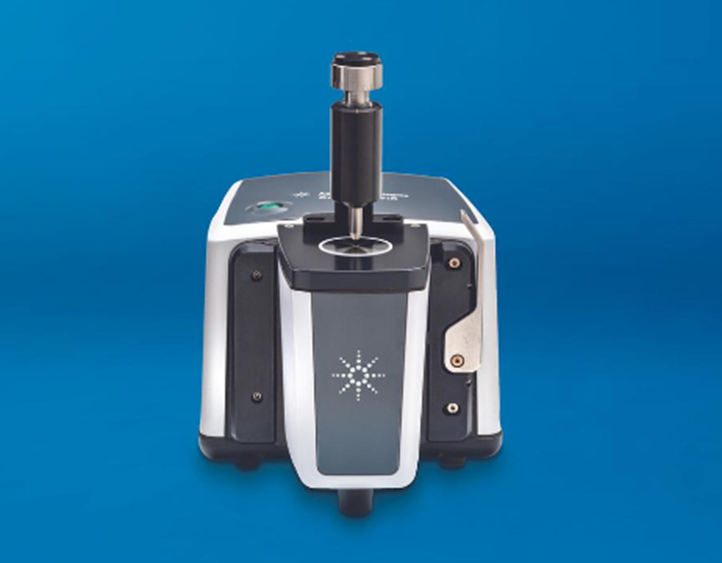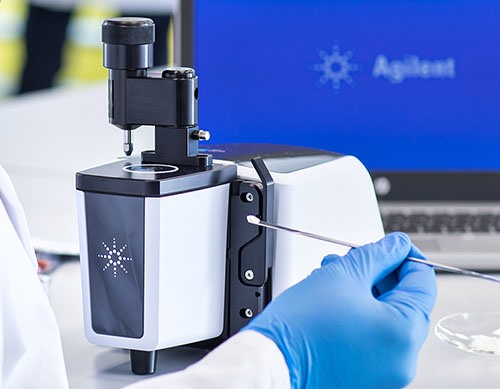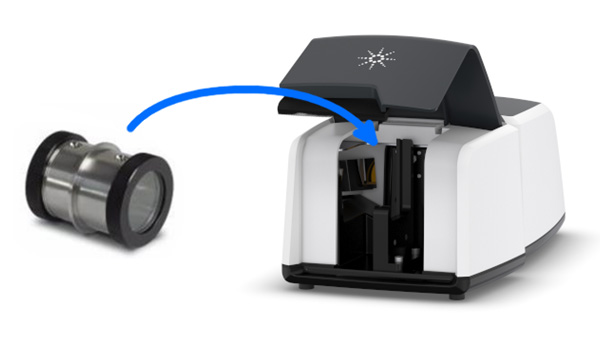
Cary 630 FTIR leads with ease in robustness and flexibility
The Cary 630 FTIR is truly a unique specimen in the FTIR market. Significantly smaller than other benchtop instruments, the Cary 630 FTIR boasts similar (if not superior in certain cases) performance, unparalleled robustness, a unique modular design, and is more than apt for everyday routine analyses. We’re not exaggerating when it comes to robustness either; the technology within the Cary 630 FTIR was born of our market leading 4300 Handheld FTIR spectrophotometer. The 4300 Handheld FTIR boasts some jaw-dropping resistance against data quality loss when moving or accidentally dropping the unit, which the Cary 630 FTIR thus inherited. Now of course Agilent Technologies doesn’t recommend dropping any scientific instrument, but if the Cary 630 FTIR were to get accidentally mishandled or dropped, it is very likely to keep on working regardless.

Choose the right Cary 630 FTIR sampling technology with a few easy questions
The Cary 630 FTIR’s modular design allows quick hot-swapping of accessories (also known as Sampling Technologies) with no realignment or software reconfiguration needed. Each module is automatically recognized by the software, which makes changing experiments on-the-fly absolutely seamless. There are quite a few of these sampling technologies available for the Cary 630 FTIR, each fit for a different purpose. Selecting the right one for routine analyses can be determined with just a few simple questions.

Is the sample a solid?
Solid samples are best handled with an ATR (attenuated total reflectance) sampling technology, however diffuse reflectance measurements are also possible with the Diffuse Reflectance equivalent. Analyzing solid samples in general requires no sample preparation, simply load the solid onto the sampling technology, close the press to ensure good contact with the solid, and that's it! Agilent offers a variety of different ATR sampling technologies (Diamond, Germanium, etc.) based on sample requirements. We’ll take a closer look at where each of these apply best in the next part of this series.

If the sample happens to be a solid thin film, then options also include doing transmission analysis with either the Transmission, Dialpath or TumblIR sampling technologies (discussed below). Note that careful sample handling is required when analyzing thin films using the Dialpath or TumblIR, as rigid or rough films could scratch the crystal surfaces in these sampling technologies (direct contact with the crystals occurs when acquiring data).
Is the sample a liquid?
Liquid samples are luckily just as straightforward on the Cary 630 FTIR. Both the DialPath and TumblIR sampling technologies revolutionized the way FTIR spectra are taken on liquids. Using the DialPath sampling technology, the user can dial into the desired pathlength (hence the clever naming) after a quick pipetting action. The DialPath sampling technology comes with three preset analysis pathlengths, which can be customized during the ordering process, while the TumblIR comes with one preset pathlength. Capillary forces ensure the liquid makes complete contact between the two crystal surfaces of the selected DialPath pathlength. Not only is this considerably quicker than using traditional IR liquid cells, there is also no need to deal with annoying air bubbles!

Alternatively, if the liquid sample is highly concentrated, the aforementioned ATR sampling technologies can be used instead. This action shortens the pathlength of analysis considerably (roughly by a factor of several hundred), and therefore could avoid saturating the Cary 630 FTIR’s detector if even the shortest pathlength on a Dialpath sampling technology proves too long.
Is the sample a gas?
Gas samples necessitate the use of the gas cell accessory, which slides into the Cary 630 FTIR’s transmission sampling technology. This accessory’s 50 mm pathlength is more than apt for generating good signal intensity from most gases. However, if the user intends to solely analyze gasses on a regular basis, there may be other dedicated instruments in the market more suited to this work.

Further reading
- Technical overview: Cary 630 FTIR brochure
- Technical overview: Pharmaceutical Analysis using FTIR: Compliance with Pharmacopoeia (EP/USP/IP/JP)
- Application note: Fast, Easy, and Reliable Measurements of Liquid Samples Using Transmission FTIR
- Application note: Improved Measurement of Liquid Samples Using FTIR
- Application note: Fast and Simple Material Identification of Plastic Debris Using FTIR Spectrometry
- Application note: Quantification and Chemical Identification of NOx Reduction Agent Using ATR-FTIR
- Application note: Material Identification of Plastics Throughout Their Life Cycle by FTIR Spectroscopy
Molecular spectroscopy webinar series
Get the latest product information and lots of helpful tips and tricks from our frequent molecular spectroscopy webinars. These live and interactive sessions take place every week, with all previous sessions available to watch on-demand.
Got a question? Leave a note on the comments below or send your query directly to our expert spectroscopy team.
